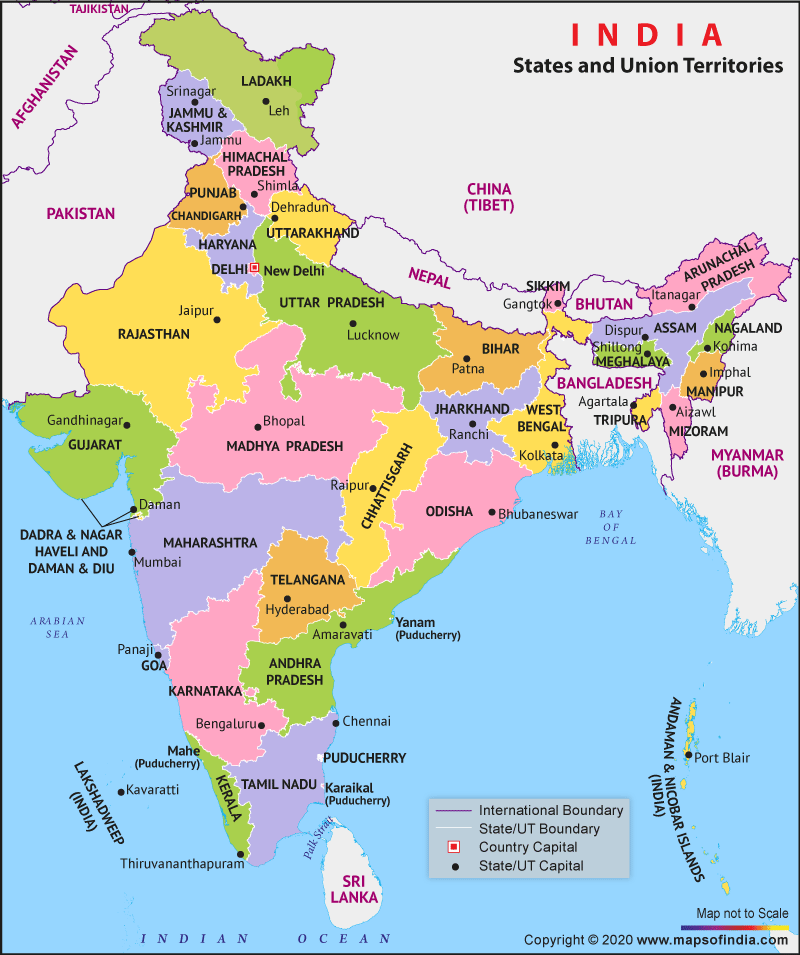 Map of India
Map of India
Mazurek, K., & Winzer, M. (2006). Schooling around the world, Debates, challenges, and practicing. (PP. 192-204)
Terrin: 2.4 percent of earth's surface area, yet 16.7 percent of planet's total populations. It is often said that India is a content not a country.
 People: India is the second most populous nation in the world (around 350 people in a square kilometer). the population is not less than 600 million. While India is only one-third the size of Canada, it s population is about 27 times that of Canada.
People: India is the second most populous nation in the world (around 350 people in a square kilometer). the population is not less than 600 million. While India is only one-third the size of Canada, it s population is about 27 times that of Canada. Religion: The majority are Hindus with %12 moslems, 2.3 Christians and 1.9 Sikhs.
Religion: The majority are Hindus with %12 moslems, 2.3 Christians and 1.9 Sikhs.
Language: Hindi is the official language of India. English is an alternative official or "link" language. There are 400 registered local languages. English is understood by only four or five percent of the totalpopulation.
Economy: there is a noticeable quick increase of exports and imports, along with a remarkable growth in manifactoring, banking, telecomunication technology and information technology.United States is the biggest trading partener of India. India exports human resources and knowledge to North Africa. However there is still a long way to go down the path to prosperity.
Culture and Politics: Inspite the fact that India is a country with a great diversity, the nationalist right-wing and the socialist left-wing together with the indian voters do not seem to mind globalization. This is what they beleive in: "Do not stop the globalization train, just slow it down and give us a better step-stool, because we want to get on."
Schooling: The modern Indian education system is 140 years old. since 1857, when the British colonizers established the first three universities-Calcutta, Madras, and Bombay. India now has 242 universities and affeliated institutions.
Education System: India has to deal with an inadequat supply of teachers and underfunded schools. In primary level, Pupil-teacher ratio, in 1998, was of 1:71.9. Resycle Education : video from CNN
- A UNICEF, 2002 study reveal inequalities by both level and gender in primary or secondary school.
- the litracy rate increased from 52 percent to 56 percent. the latest data shows that %64.8 of the population are literate.
- Free public schooling by constitution with many private and for-profit schools that take formal "donations".
Elementary School: Great success for the indian government in this field. %94 of the rural population in India have elementary schools. %84 have upper primary schools and school is free up to the age of 14.
Secondary School: Secondary education is also free. In addition to bublic schools, there are also institution for gifted and talented
Pre-university education(grades 11 and 12): usually offered in community colleges unless the student was talented. the gifted students are given scholarship awards following writtin examination.
CBSE Schools:Central Board of Secondary Education has been established by the government to follow a uniform school education by providing a common curriculum that adress the cross-cultur and the cross-linquistic aproach.the unifide schools educate children of parents who have job assignments requiring frequent travel and relocation.
NOS: The National Open School provide distance education for school dropouts and children unable to enroll in regular schools. 300,000 are enrolled in open schools.
Universities:
- The University Grants Commission (UGC), oversees the standards and implementation of higher education in India.
- There are several research and teaching institutions that are directly under federal jurisdiction, and there are also bublic and private universities in the provences, but all universities are controlled by federal policies.
Distance Universities
India has good experience in open universites. They are currently nine open university with Indira Gandhi National Open University being the second larget Open University in the world after the Television University of China. Video conferences along with other technology are utilized and degree programes are offered.
Adult Education
India has an extensive and well-established adult education network. Sixty percent of the students of this network are women.
Education for Women
Currently, Education for Women'sEquality spread over eight provences. It deals with female enrollment, retention, and employment. This body is responsible for curriculum issues relating to gender bias.